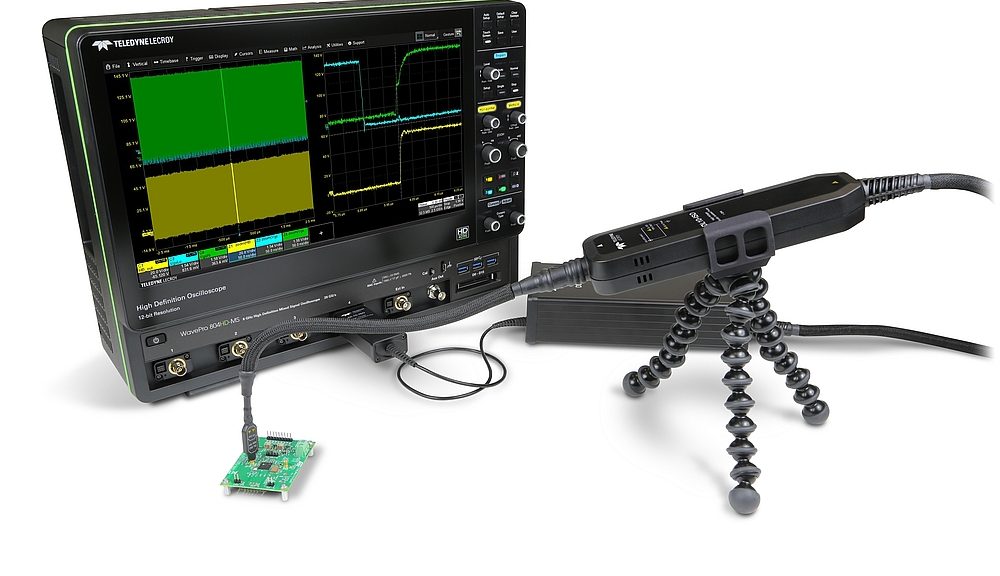- Teledyne LeCroy announces the release of its new high-voltage, optically isolated DL-ISO probe with 1 GHz bandwidth and software for testing power devices using wide bandgap semiconductors.
- The probe, for use with the company’s high-definition oscilloscopes (HDOs), is designed to more accurately characterize electronic devices using gallium nitride (GaN) and silicon carbide (SiC) power semiconductors.
Silicon (Si) metal-oxide-semiconductor field-effect transistor (MOSFET) and insulated-gate bipolar transistor (IGBT) power semiconductors have been used for more than thirty years in power supply and power conversion systems. Gallium nitride (GaN) and silicon carbide (SiC) power semiconductors allow for smaller, lighter power supplies and systems while providing higher efficiencies.
Wide-bandgap materials such as GaN and SiC enable semiconductor designs that switch more than ten times faster than silicon-based materials. This allows power supplies to save weight, size and efficiency.
Analysis of power supply systems based on wide bandgap semiconductors, however, requires measurement probes with greater frequency bandwidth and accuracy.
Teledyne Lecroy has designed the DL-ISO optically isolated high voltage probe to meet these requirements. The new probe has an accuracy of 1.5% when combined with the company’s HDO series oscilloscopes, which digitize signals with 12-bit resolution at a sampling rate of up to 20 GS/s. Its 1 GHz bandwidth meets the requirements of measuring 1 ns rise times of GaN semiconductors.
Teledyne LeCroy’s new Power-Device software provides tools for analyzing GaN and SiC semiconductor power systems. It allows a variety of measurements to be made automatically, including JEDEC switching losses, as well as color-coded overlays to highlight relevant measurement areas.
Depending on the model, the DL-ISO probes have bandwidths of 350 MHz, 700 MHz and 1 GHz.






